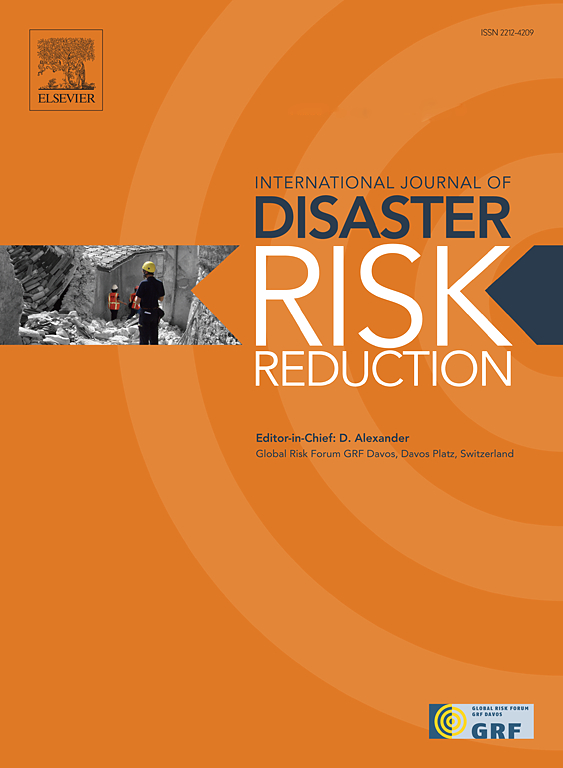Earthquake vulnerability assessment of non-engineered URM residential buildings
IF 4.2
1区 地球科学
Q1 GEOSCIENCES, MULTIDISCIPLINARY
International journal of disaster risk reduction
Pub Date : 2025-04-09
DOI:10.1016/j.ijdrr.2025.105476
引用次数: 0
Abstract
In many developing countries, unreinforced masonry (URM) buildings are often constructed without following established engineering practices, increasing the risk in seismically active areas. It is therefore imperative to develop a practical and cost-effective method for assessing the seismic vulnerability of these types of residential structures. This study focuses on the development of an approach to assess the seismic vulnerability of non-engineered URM residential buildings in earthquake-prone urban areas. The methodology modifies the macroseismic vulnerability method by using existing fragility curves to simulate local damage scenarios. In addition, it incorporates multi-criteria decision making techniques, namely: (i) the Analytical Hierarchy Process; and, (ii) the Technique for Order of Preference by Similarity to Ideal Solution. These MCDM techniques are used to weigh key structural parameters and develop a comprehensive vulnerability index. Applied to developing countries, this approach provides a detailed vulnerability assessment and simulates various damage scenarios. The results confirm the robustness of the proposed methodology and highlight its potential for wider application in places with similar URM building stock and seismic context.
求助全文
约1分钟内获得全文
求助全文
来源期刊

International journal of disaster risk reduction
GEOSCIENCES, MULTIDISCIPLINARYMETEOROLOGY-METEOROLOGY & ATMOSPHERIC SCIENCES
CiteScore
8.70
自引率
18.00%
发文量
688
审稿时长
79 days
期刊介绍:
The International Journal of Disaster Risk Reduction (IJDRR) is the journal for researchers, policymakers and practitioners across diverse disciplines: earth sciences and their implications; environmental sciences; engineering; urban studies; geography; and the social sciences. IJDRR publishes fundamental and applied research, critical reviews, policy papers and case studies with a particular focus on multi-disciplinary research that aims to reduce the impact of natural, technological, social and intentional disasters. IJDRR stimulates exchange of ideas and knowledge transfer on disaster research, mitigation, adaptation, prevention and risk reduction at all geographical scales: local, national and international.
Key topics:-
-multifaceted disaster and cascading disasters
-the development of disaster risk reduction strategies and techniques
-discussion and development of effective warning and educational systems for risk management at all levels
-disasters associated with climate change
-vulnerability analysis and vulnerability trends
-emerging risks
-resilience against disasters.
The journal particularly encourages papers that approach risk from a multi-disciplinary perspective.
 求助内容:
求助内容: 应助结果提醒方式:
应助结果提醒方式:


